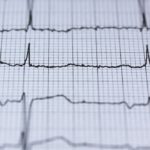 February is American Heart month. We all know that taking care of our heart is important for our health. But do we make the necessary daily choices for our heart health? Click here to read more.
February is American Heart month. We all know that taking care of our heart is important for our health. But do we make the necessary daily choices for our heart health? Click here to read more.
Wear Red on the First Friday in February
 Wear red to raise awareness about cardiovascular disease and save lives. Because when we come together, there’s nothing we can’t do. Read more here.
Wear red to raise awareness about cardiovascular disease and save lives. Because when we come together, there’s nothing we can’t do. Read more here.
Do Heart Attack Symptoms Discriminate Between The Sexes?
 When it comes to a pending heart attack, there’s not one warning signal that applies to everyone. Men and women share some symptoms like chest pain, indigestion and dizziness. Shortness of breath also applies to both sexes, but in men it often feels like one can’t get enough air even when resting.
When it comes to a pending heart attack, there’s not one warning signal that applies to everyone. Men and women share some symptoms like chest pain, indigestion and dizziness. Shortness of breath also applies to both sexes, but in men it often feels like one can’t get enough air even when resting.
However, there are some symptoms that appear to manifest differently by sex.
Symptoms common in men are:
- upper body discomfort or pain that includes arms, left shoulder, back, neck, jaw or stomach
- rapid or irregular heartbeat
- breaking out in a cold sweat
Symptoms more common to women are:
- anxiety
- sleep disturbances
- unusual fatigue lasting for several days or sudden severe fatigue
- jaw pain or pain that spreads up into one’s jaw
- upper back, shoulder or throat pain
The most important thing for you to know is what’s normal and abnormal for your body. Even if you’re not sure any of these symptoms are warnings, get emergency care right away. The best way to recover from a heart attack is early intervention, regardless of sex.
Cardiac Surgery – How Procedures Have Evolved From Scary To Routine
 The evolution of cardiac surgery has dramatically lessened the risk of going under the knife. These days, some hospitals specialize in heart health only. However, it took a lot of steps to reach this point. Here’s a brief history…
The evolution of cardiac surgery has dramatically lessened the risk of going under the knife. These days, some hospitals specialize in heart health only. However, it took a lot of steps to reach this point. Here’s a brief history…
1893 – The first successful surgery on the heart was performed in Chicago.
1925 – A young woman was successfully operated on when the surgeon opened a chamber and inserted a finger to find and feel her damaged valve.
1952 – A congenital heart defect was successfully corrected and the first cardiac surgery under local anesthesia was performed.
In 1967, the first human-to-human heart transplant was performed in South Africa by Dr. Christiaan Barnard.
By the early 1990s, surgeons began to perform off-pump coronary bypass. This means the heart continues to beat during the procedure but is stabilized to be almost still while bypass vessels are sown in.
Today numerous procedures can be performed with small incisions instead of wide openings that create that “zipper look” scar down the chest. It’s possible that in the future, the term “open-heart” will become obsolete.
What’s The Latest Advice On How To Prevent Heart Disease?
 When it comes to heart disease prevention, little has changed. High cholesterol is still a factor, as are smoking and obesity. Now when it comes to keeping your heart healthy, think of these four words – sleep, activity, diet and stress.
When it comes to heart disease prevention, little has changed. High cholesterol is still a factor, as are smoking and obesity. Now when it comes to keeping your heart healthy, think of these four words – sleep, activity, diet and stress.
Let’s start with sleep. Most adults need seven to nine hours of sleep per night. Adequate sleep helps keep your blood pressure, weight and blood sugar under better control.
Stay active! Exercise has many benefits including strengthening your heart and improving circulation. Like sleep, it helps you control your weight, blood pressure and blood sugar levels. It also lowers your cholesterol.
Eat a healthy diet. By limiting saturated fats, foods high in sodium and added sugars, it’s easier to maintain a healthy weight, lower cholesterol and keep your blood sugar level steady.
Manage stress. Traditionally, common ways to cope with stress include smoking, overeating and consuming too much alcohol – all of which work against your heart. Instead, meditate and focus on things that make you calm. Again, this keeps your blood pressure lower, maintains a healthy weight, cholesterol and blood sugar levels.
Do these four things and you’ll not only stave off heart disease, you’ll enjoy each day more!
